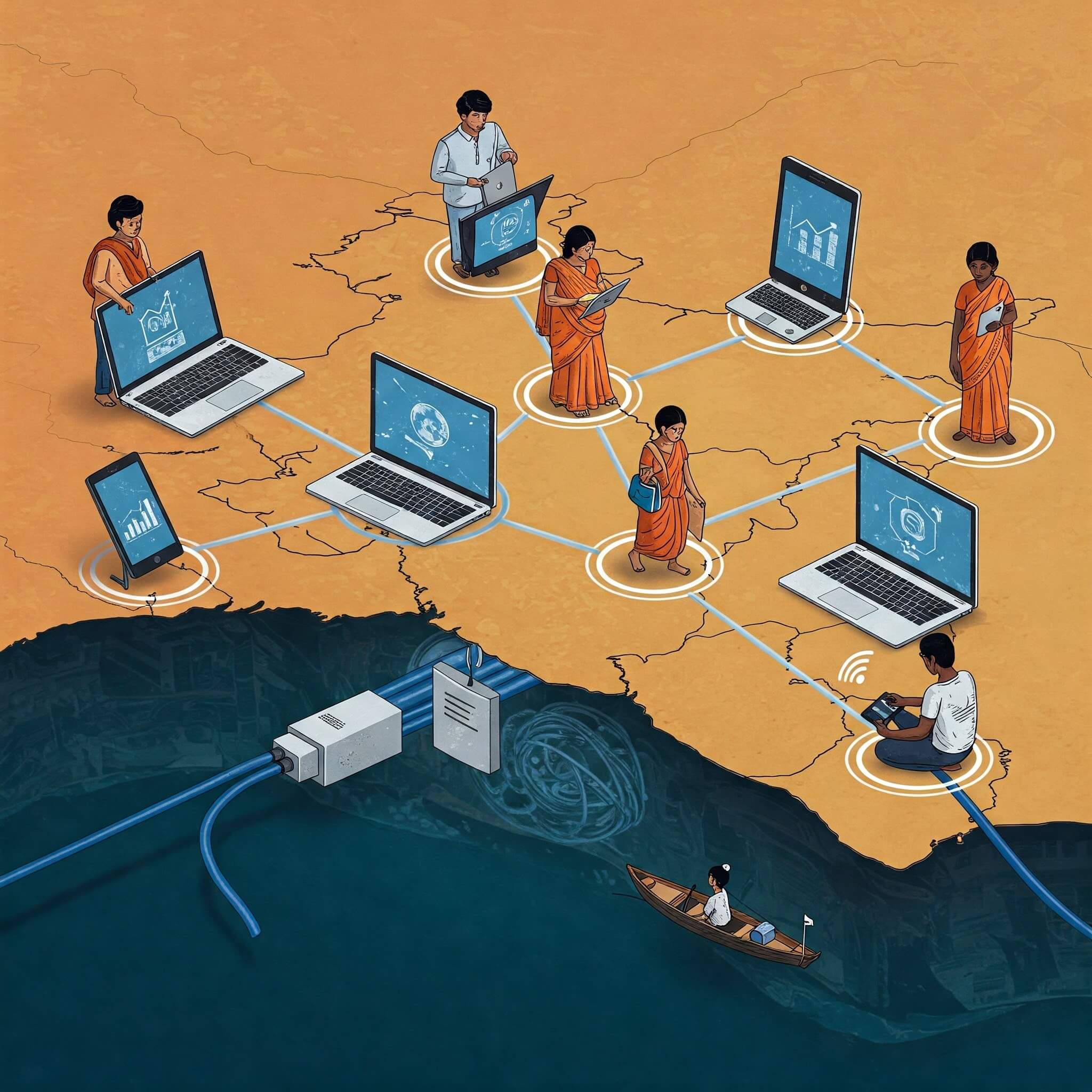Starlink, the satellite internet service from Elon Musk's SpaceX, is gearing up to significantly enhance connectivity in India. Recent developments indicate a strong push towards obtaining the necessary regulatory approvals and establishing partnerships with major Indian telecom providers. This move has the potential to revolutionize internet access, particularly in rural and remote areas, and marks a significant shift in India's telecom landscape.
Partnerships with Airtel and Jio
In a noteworthy turn of events, Bharti Airtel and Reliance Jio, two of India's largest telecom companies, have signed distribution agreements with SpaceX to bring Starlink's high-speed internet service to their customers. This is a significant development, especially considering that these companies were previously seen as competitors to Starlink and had advocated for an auction-based system for satellite spectrum allocation. The partnerships will allow both companies to integrate Starlink into their existing networks, boosting their service offerings and reaching previously underserved areas.
Airtel plans to explore offering Starlink equipment in its retail stores and providing Starlink services to business customers, as well as connecting communities, schools, and health centers in rural areas. Jio aims for a deeper integration of Starlink into its ecosystem, complementing its existing JioFiber and JioAirFiber services. Both companies will sell Starlink equipment to customers, making the service accessible through their established retail networks across the country.
Regulatory Hurdles and Approvals
Despite these partnerships, Starlink still faces regulatory challenges before it can officially launch its services in India. The company requires approval from the Department of Telecommunications (DoT) and the Indian National Space Promotion and Authorization Centre (IN-SPACe). Starlink has been waiting for licenses to operate commercially in India since 2022, with the process delayed due to national security concerns and other factors.
Recent reports suggest that Starlink has submitted the required paperwork and agreed to key conditions necessary for obtaining operational and commercial access in India. These conditions include setting up a ground station and a network control and monitoring center within India, as well as complying with provisions to shift or relocate user terminals. The company has also committed to avoiding routing data through gateways in countries sharing land borders with India.
Technological Advantages and Capacity
Starlink's satellite capacity is expected to be significantly higher than its competitors, potentially delivering several terabytes per second of data throughput. This is estimated to be 80-90 times greater than the services offered by Eutelsat-OneWeb and Reliance Jio-SES, which currently offer data speeds ranging from 30-50 gigabits per second (Gbps). Starlink uses low Earth orbit (LEO) satellites to provide high-speed broadband ranging from 25 to 220 Mbps with low latency. The company has around 7,086 Starlink satellites in orbit, with plans to expand to 42,000 in the coming years.
Benefits for India
Starlink's entry into India has the potential to offer numerous benefits, particularly in bridging the digital divide and promoting economic development. By partnering with Starlink, Jio and Airtel can extend telecom services to underserved regions in India, connecting rural and remote areas and providing businesses and enterprises in these locations with reliable internet access. This can enable access to online education, telemedicine, and e-commerce, empowering rural communities and promoting economic growth. Starlink can also provide reliable internet access in mountainous regions, forests, and other remote areas where laying fiber optic cables is challenging or impossible.
Furthermore, Starlink can provide critical communication infrastructure during emergencies, enabling disaster relief efforts and aiding affected populations. It can also provide internet access to ships and aircraft operating in Indian waters and airspace for communication.
Pricing and Competition
If Starlink launches in India, it is likely that pricing and speeds will be competitive with other satellite broadband providers. However, due to taxation on foreign digital services in India, Starlink's plans could be slightly more expensive than in Bhutan, potentially starting at around ₹3,500-₹4,500 per month.
Concerns and Challenges
Despite the potential benefits, there are also concerns and challenges associated with Starlink's entry into India. One concern is the potential for Starlink equipment to be used for illicit purposes, particularly in sensitive areas. In December 2024, Starlink equipment was discovered in Manipur, allegedly facilitating communication among local militant groups. Additionally, drug smugglers were found using a Starlink Mini to infiltrate Indian waters in the Andaman and Nicobar Islands.
The Indian government will need to balance its desire to attract foreign investment with the interests of domestic telecom giants. The final terms of Starlink's approval, including spectrum pricing and compliance requirements, will play a crucial role in determining its long-term viability in India.
Conclusion
Starlink's preparations to boost India's connectivity represent a significant step towards bridging the digital divide and promoting economic development. The partnerships with Airtel and Jio, combined with the potential for high-speed internet access in remote areas, offer a promising outlook for the future of connectivity in India. However, regulatory hurdles, security concerns, and pricing considerations will need to be carefully addressed to ensure that Starlink's services can be effectively deployed and utilized across the country.

















